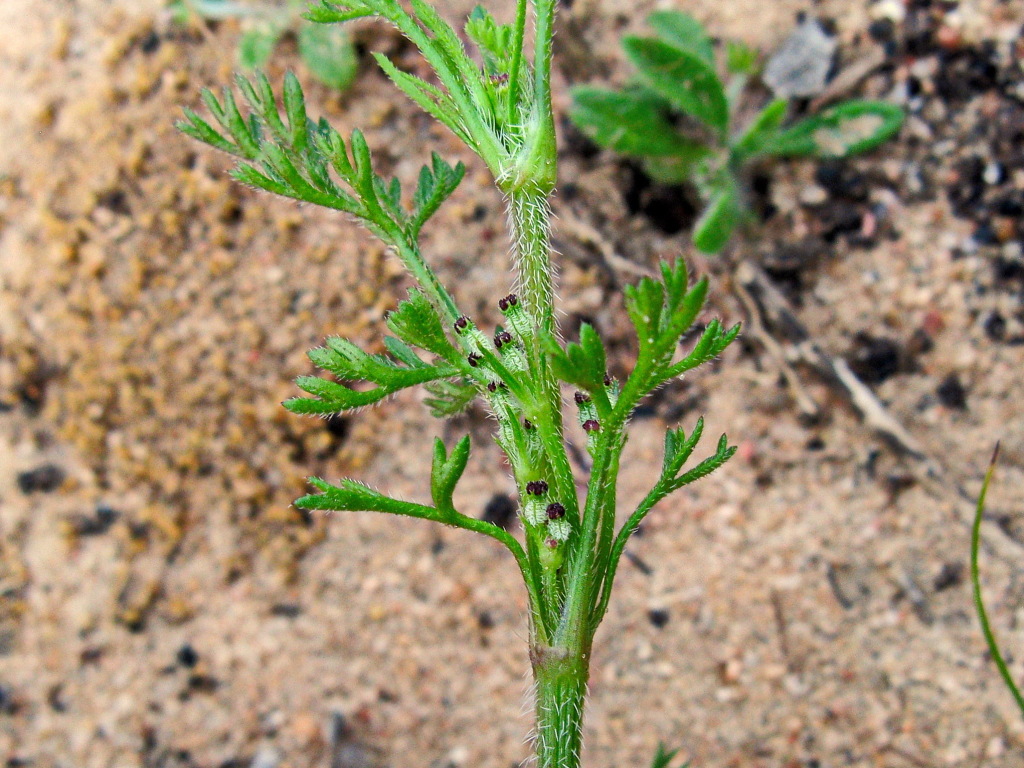Daucus glochidiatus
(Labill.) Fisch. Australian CarrotErect or ascending annual herb, 3–60 cm high, often branched at base. Leaves 2(–3)-pinnate, lamina 1–7.5(–30) cm long; leaflets ovate, ultimate segments narrow-linear, hispid on veins and margins; petiole of basal leaves as long or longer than lamina, slender with a narrow sheathing base. Umbels irregular, almost sessile or with 2–5 unequal rays to 5 cm long; umbellules 1–6-flowered, c. 1.5 mm diam.; involucral bracts 1–3, linear to narrow-lanceolate, often with membranous margins, often hispid, usually pinnatifid; involucral bracteoles narrow, entire. Petals minute, often purplish. Fruit ovoid, 3–6 mm long, primary ribs with a row of short bristles that spread alternately on each side of the rib, secondary ribs with hooked bristles Flowers Sep.–Feb.
LoM, MuM, Wim, GleP, Brid, VVP, VRiv, MSB, RobP, MuF, GipP, OtP, WaP, Gold, CVU, GGr, DunT, NIS, EGL, EGU, WPro, HSF, HNF, OtR, Strz, MonT, VAlp. All states. New Zealand. Widespread and locally common in all but high-altitude and very high-rainfall areas, occurring through a wide variety of habitats.
There are a number of named infraspecific taxa within D. glochidiatus, but further study is required to assess their rank and circumscription. In Victoria plants generally fall into 2 groups: those from north of the Great Dividing Range tend to have persistent petals, and relatively large fruit with long, swollen spines on the primary ribs which are often purple tinged, while populations to the south tend to have deciduous petals, and fruit at the smaller end of the range for the species, with narrower, green spines.
Duretto, M.F. (1999). Apiaceae. In: Walsh, N.G.; Entwisle, T.J., Flora of Victoria Vol. 4, Cornaceae to Asteraceae, pp. 256–258. Inkata Press, Melbourne.
 Spinning
Spinning



